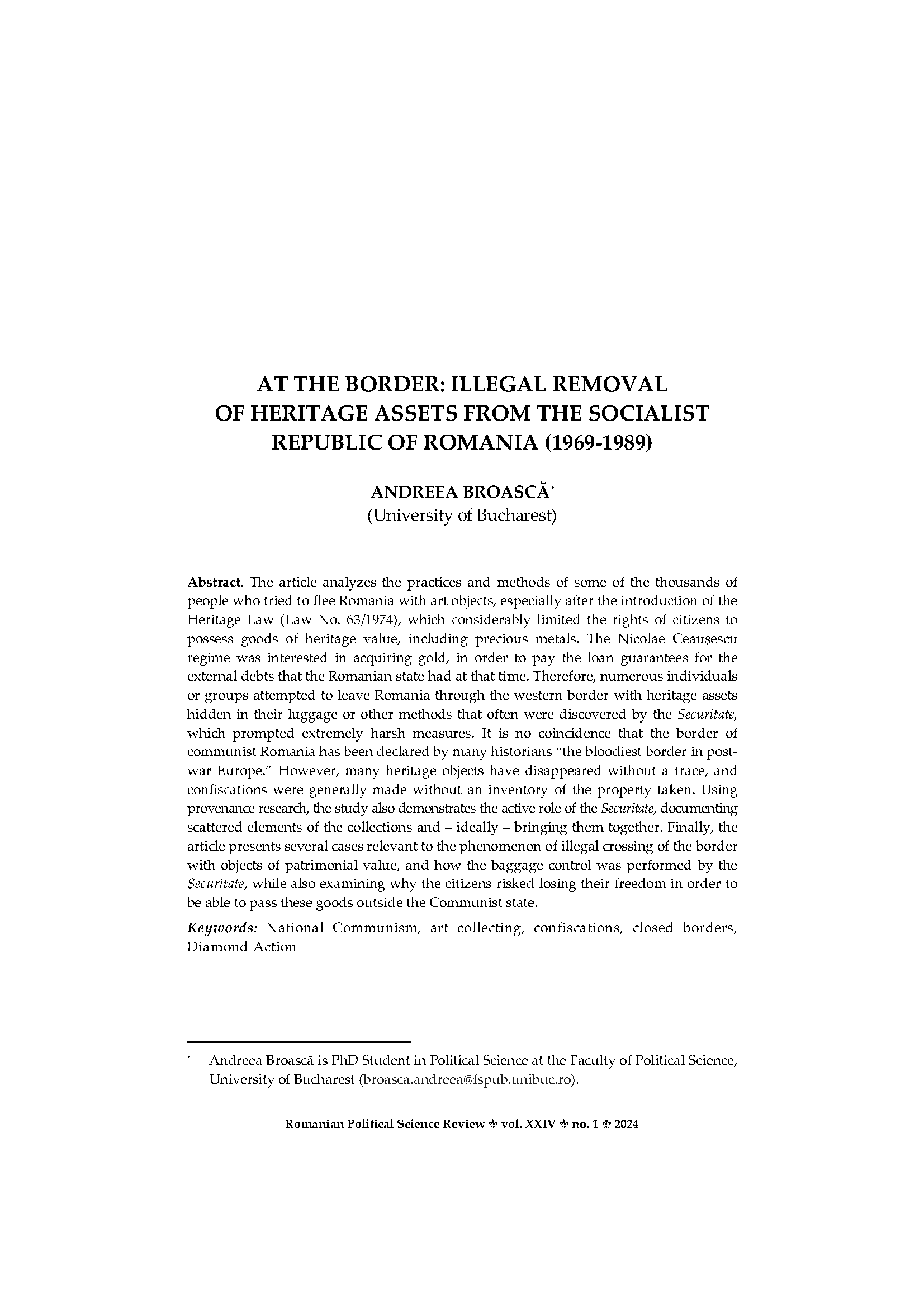AT THE BORDER: ILLEGAL REMOVAL OF HERITAGE ASSETS FROM THE SOCIALIST REPUBLIC OF ROMANIA (1969-1989)
DOI:
https://doi.org/10.62229/sprps24-1/3Keywords:
National Communism, art collecting, confiscations, closed borders, Diamond ActionAbstract
The article analyzes the practices and methods of some of the thousands of people who tried to flee Romania with art objects, especially after the introduction of the Heritage Law (Law No. 63/1974), which considerably limited the rights of citizens to possess goods of heritage value, including precious metals. The Nicolae Ceaușescu regime was interested in acquiring gold, in order to pay the loan guarantees for the external debts that the Romanian state had at that time. Therefore, numerous individuals or groups attempted to leave Romania through the western border with heritage assets hidden in their luggage or other methods that often were discovered by the Securitate, which prompted extremely harsh measures. It is no coincidence that the border of communist Romania has been declared by many historians “the bloodiest border in postwar Europe.” However, many heritage objects have disappeared without a trace, and confiscations were generally made without an inventory of the property taken. Using provenance research, the study also demonstrates the active role of the Securitate, documenting scattered elements of the collections and – ideally – bringing them together. Finally, the article presents several cases relevant to the phenomenon of illegal crossing of the border with objects of patrimonial value, and how the baggage control was performed by the Securitate, while also examining why the citizens risked losing their freedom in order to be able to pass these goods outside the Communist state.





